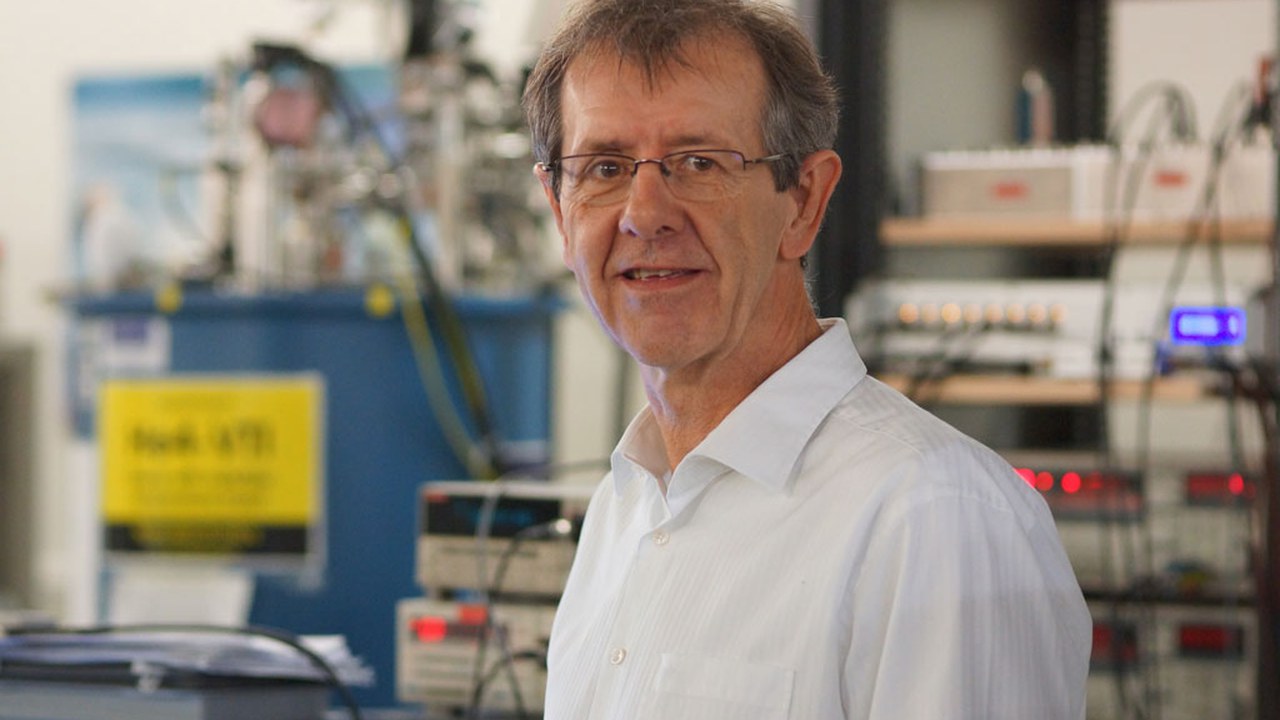Christian Schönenberger: Cooper-pairs are nice, but split ones too!
Colloquia
- Speaker
-
Christian Schönenberger
Department of Physics and Swiss Nanoscience Institute, University of Basel, Switzerland - When
-
2018/06/14
17:30 - Place
- DIPC
- Add to calendar
-
iCal

Department of Physics and Swiss Nanoscience Institute, University of Basel, Switzerland
An elegant concept for the creation of entangled electrons in a solid-state device is to split Cooper pairs by coupling a superconductor to two parallel quantum dots (QDs) in a Y-junction geometry [1]. Cooper pair splitting (CPS) was investigated in recent years in devices based on InAs nanowires [2,3] and carbon nanotubes (CNTs) [4,5] and identified by a positive correlation between the currents through the QDs. I will first review these experiments and demonstrate that high splitting efficiencies >90% can be achieved [5]. A high CPS efficiency is a prerequisite for Bell state measurements [6], a clear way of proving that Cooper pairs can be extracted coherently, leading to spatially separated entangled electron pairs. Further requirements on entanglement measurements will be addressed in the talk as well [6] and a future perspective will be given.
My aim is to give a historical view of research that started around 10 years ago in my lab, hopefully understandable a general audience interested in solid-state physics in general. This journey shows how scientific research evolves, where one often takes detours and where one constantly has to reflect the finding in the lab based on either physical intuition (simple minded models) or, if available, good theory.
This is a collaborative effort with many people, see my group website www.nanoelectronics.ch and other goups as well. I would like to mention in particular the groups of Szabolcs Csonka, Budapst University of Technology and Economy, Jesper Nygard, Nano-Science Center, Niels Bohr Institute of the University of Copenhagen, and Jan Martinek- IFM-PAN, Poznan, Polen. I acknowledge funding from the Swiss NFS, SNI, NCCR-QSIT, FP7-SE2ND and ERC-QUEST.
[1] P. Recher, E.V. Sukhorukov and D. Loss, Phys. Rev. B 63, 165314 (2001).
[2] L. Hofstetter, S. Csonka, J. Nygård and C. Schönenberger, Nature 461, 960 (2009).
[3] L. Hofstetter, S. Csonka, A. Baumgartner, G. Fülöp S. d'Hollosy, J. Nygård and C. Schönenberger, Phys. Rev. Lett. 107, 136801 (2011).
[4] L.G. Herrmann, F. Portier, P. Roche, A. Levy Yeyati, T. Kontos and C. Strunk, Phys. Rev. Lett. 104, 026801 (2010).
[5] J. Schindele, A. Baumgartner, and C. Schönenberger, Phys. Rev. Lett. 109, 157002 (2012).
[6] W. Kłobus, A. Grudka, A. Baumgartner, D. Tomaszewski, C. Schönenberger, and J. Martinek, Phys. Rev. B 89, 125404 (2014).
[7] G. Fülöp, S. d'Hollosy, A. Baumgartner, P. Makk, V. A. Guzenko, M. H. Madsen, J. Nygård, C. Schönenberger, and S. Csonka, Phys. Rev. B 90, 235412 (2014).
[8] J. Schindele, A. Baumgartner, R. Maurand, M. Weiss, and C. Schönenberger, Phys. Rev. B 89, 045422 (2014).
Prof. Schönenberger's web page
Nanoelectronics Group
Wikipedia article
About the speaker
Prof. Schoenenberger has a distinguished career in first industrial and then academic experimental research. After early work in force microscopy he investigated the electronics of natural and engineered nanodevices. Since 1995 he is full professor at the University of Basel, where he heads the Nanoelectronics Group. He has conducted some of the key experiments in nanoelectronics: He demonstrated electronic quantum interference by measuring the Aharonov-Bohm effect in multi-walled carbon nanotubes and by realizing the quantum optical Hanbury Brown and Twiss effect for the first time with electrons and demonstrated the (anti)bunching effects arising from their fermionic statistics.
Schoenenberger is a leader in the study of electronic properties of "hybrid" devices, that combine normal metals with superconductors and ferromagnetic elements. A fundamental tool in many of these studies is the "Cooper pair splitter" that spatially separates the entangled electrons forming the pairs and which he first demonstrated in 2009.
